Exploring Qinling National Botanical Garden: China’s Hidden Gem for Botanical Enthusiasts

An Essential Guide to Visiting Qinling National Botanical Garden Scenic Area
In This Guide
- An Essential Guide to Visiting Qinling National Botanical Garden Scenic Area
- The Rich History and Legends of Qinling National Botanical Garden Scenic Area
- Main Highlights: What You Absolutely Can’t Miss
- Planning Your Visit: A Practical Guide
- Tickets: Prices, Booking, and Tips
- How to Get There: A Complete Transportation Guide
- Local Cuisine and Accommodation Nearby
- Frequently Asked Questions
- Final Thoughts on Your Trip
Visiting the Qinling National Botanical Garden Scenic Area is a journey into the heart of one of China’s most extraordinary natural treasures. Nestled at the northern foot of the majestic Qinling Mountains, this expansive botanical garden is more than just a destination; it is a vibrant tapestry of flora and fauna that exemplifies the rich biodiversity of the region.
As you step into the park, you are greeted by a lush landscape featuring over 1,600 species of plants and 164 species of animals, including rare creatures like the giant panda and the golden monkey. The garden is meticulously designed to showcase the harmony between humanity and nature, making it an ideal spot for eco-tourism enthusiasts and families alike.
Why Visit?
-
Ecological Diversity: The garden boasts an impressive forest coverage rate of 95%, offering a glimpse into the thriving ecosystems that flourish here. Each season brings a unique palette of colors, from vibrant spring blooms to the golden hues of autumn leaves.
-
Educational Opportunities: Beyond its stunning scenery, the garden serves as a hub for scientific research and conservation efforts. Visitors can delve into the popular science museum and engage with interactive exhibits that highlight the importance of preserving these natural wonders.
-
Cultural Significance: The location is steeped in history, sitting within a region that has been revered in Chinese culture for centuries. The interplay of nature and historical context enriches the visitor experience, offering insights into traditional Chinese philosophy regarding the environment.
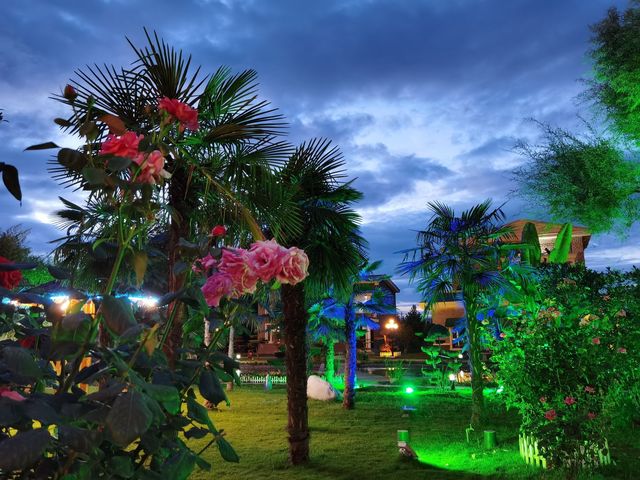
Qinling_National_Botanical_Garden_Scenic_Area.
What to Expect?
-
Stunning Landscapes: The garden’s diverse geography includes high mountains, rolling hills, and serene plains, making it a picturesque setting year-round. Whether you’re exploring the Grand Canyon or admiring the waterfalls, every corner reveals breathtaking views.
-
Recreational Activities: Ideal for families, the park features well-maintained pathways suitable for strollers and offers opportunities for picnicking, hiking, and even enjoying water activities in the summer months.
-
Visitor Information: The garden is open daily from 8:30 AM to 5:30 PM, with last admission at 4:30 PM. Plan to spend a full day exploring the expansive grounds to fully appreciate its beauty and diversity.
Tips for Your Visit
-
Timing: For an optimal experience, visit during the spring or autumn when the colors are at their most vibrant.
-
Facilities: The garden is equipped with inns and restaurants, making it convenient for a full-day excursion. Reservations are recommended for dining experiences.
-
Respect Nature: As you explore, remember to follow park guidelines to protect the delicate ecosystems and ensure a clean environment for all visitors.

Qinling_National_Botanical_Garden_Scenic_Area.
Embarking on a trip to the Qinling National Botanical Garden Scenic Area is not just a visit; it’s an invitation to immerse yourself in the unparalleled beauty of nature, celebrate ecological diversity, and connect with the rich history of one of China’s most cherished landscapes. Whether you are a nature lover, a cultural enthusiast, or simply seeking a refreshing retreat, this hidden gem promises an unforgettable experience.
The Rich History and Legends of Qinling National Botanical Garden Scenic Area
Discovering the Depths of Qinling’s Heritage
Nestled at the foot of the majestic Qinling Mountains, the Qinling National Botanical Garden Scenic Area stands as a testament to the rich tapestry of Chinese history and the legends that have shaped this enchanting region. Not only does the garden boast a diverse array of flora and fauna, but it also serves as a silent witness to the cultural narratives that have unfolded over centuries.

Qinling_National_Botanical_Garden_Scenic_Area.
A Historical Overview
The Qinling Mountains, often referred to as the “Dragon Backbone” of China, have long been regarded as a natural boundary between northern and southern China. This geographical significance has made the area a focal point for various ancient dynasties. The mountains are steeped in history, with archaeological findings suggesting human activity dating back to the Paleolithic era.
The Qinling National Botanical Garden itself was established as a collaborative effort between several governmental bodies and institutions, aiming to preserve the region’s unique biodiversity and cultural heritage. With a planned area of 639 square kilometers, it encompasses a vast array of ecosystems, including primitive forests that have remained largely untouched for centuries. This commitment to conservation reflects China’s broader ecological values and its historical reverence for nature.
Legends and Folklore
The allure of the Qinling Mountains is not only rooted in its natural beauty but also in the legends that echo through its valleys.
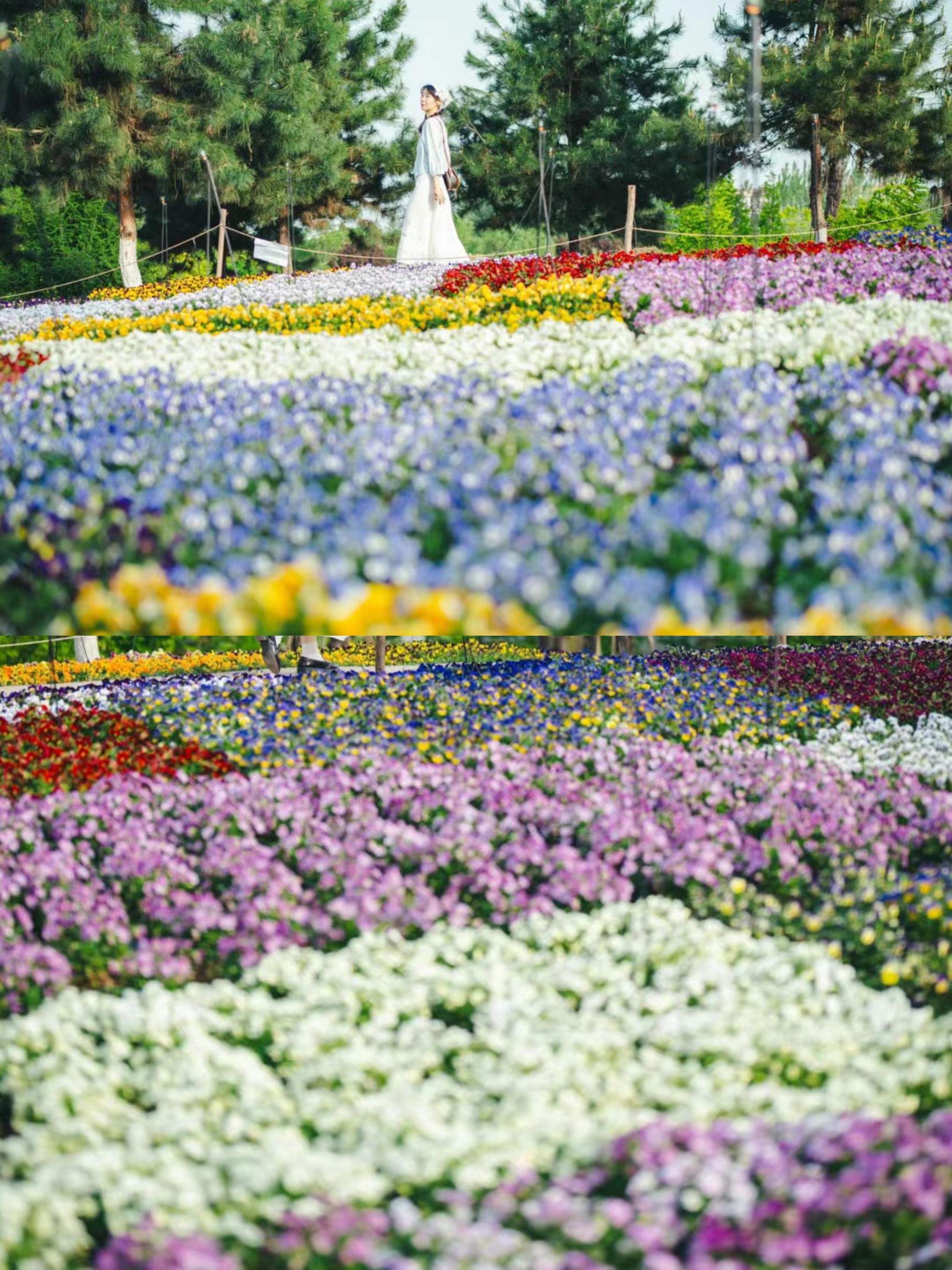
Qinling_National_Botanical_Garden_Scenic_Area.
-
The Legend of the White Snake: One of the most famous Chinese legends is that of the White Snake, which speaks to the themes of love and transformation. It is said that the spirit of a white snake transformed into a beautiful woman dwells in the Qinling Mountains. Her story symbolizes the deep connection between humans and nature, a sentiment that resonates throughout the botanical garden.
-
The Immortal Zhang Sanfeng: Another legend speaks of Zhang Sanfeng, a Taoist immortal believed to have perfected Tai Chi in the serene isolation of the Qinling Mountains. Visitors often find inspiration in the tranquil surroundings, recalling the legends of seekers who came to these mountains in search of enlightenment, making the garden a spiritual sanctuary.
Botanical Treasures and Cultural Heritage
The garden is home to over 1,641 species of wild plants and 164 species of animals, including some rare and endangered species. Among these botanical treasures are the “Qinling Double Beauties”: the Davidia involucrata and Taxus chinensis. These plants are not only significant for their ecological value but also for the cultural stories they carry. The Davidia, with its distinctive white flowers, is often associated with purity and beauty in Chinese poetry.
The presence of rare flora, such as the Monotropa uniflora, known as the ghost plant, adds an air of mystery and wonder. This plant thrives in the shaded underbrush, embodying the enigmatic nature of the Qinling region and its ability to nurture life in unexpected ways.
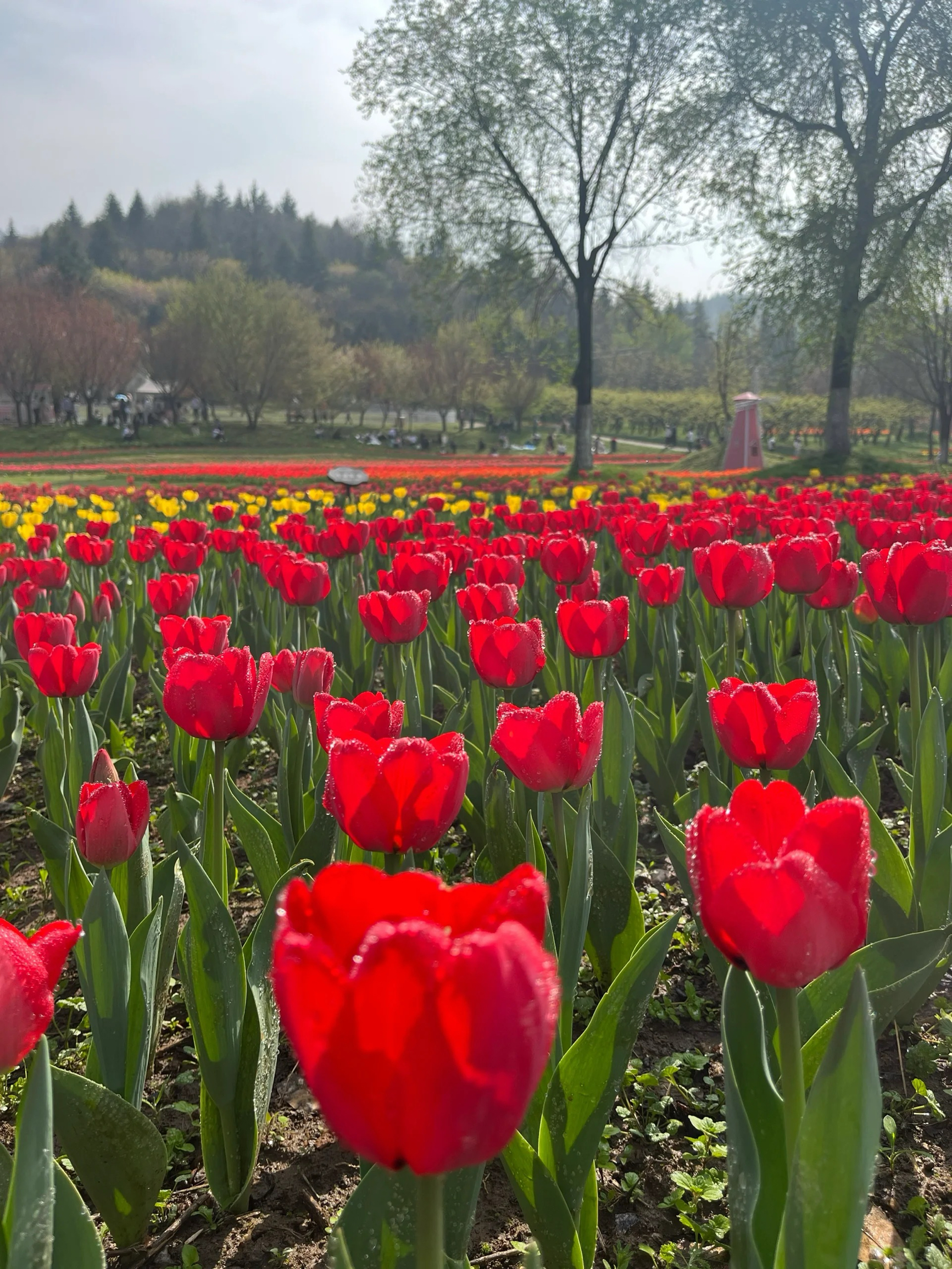
Qinling_National_Botanical_Garden_Scenic_Area.
A Living Classroom
Beyond its stunning landscapes, the Qinling National Botanical Garden serves as an educational hub where the past meets the present. The garden features various exhibitions and educational programs that highlight the importance of biodiversity and conservation. Visitors can engage with interactive displays about traditional Chinese medicine, which often draws from the rich plant life found in the garden.
The garden’s commitment to education reflects a deep-rooted cultural respect for nature, echoing ancient philosophies that advocate for harmony between humanity and the environment. This ethos is particularly resonant in the context of Chinese culture, where nature is often celebrated in art, literature, and philosophy.
Conclusion
The Qinling National Botanical Garden Scenic Area is more than just a picturesque destination; it is a vibrant tapestry of history, legend, and ecological wonder. As international travelers explore its trails and admire its botanical riches, they are not only witnessing the beauty of nature but also immersing themselves in the rich cultural heritage that has flourished in this remarkable region for millennia. Whether it’s through the legends that linger in the air or the historical narratives etched into the landscape, the Qinling National Botanical Garden invites all who visit to connect with the past and embrace the enduring legacy of this enchanting space.
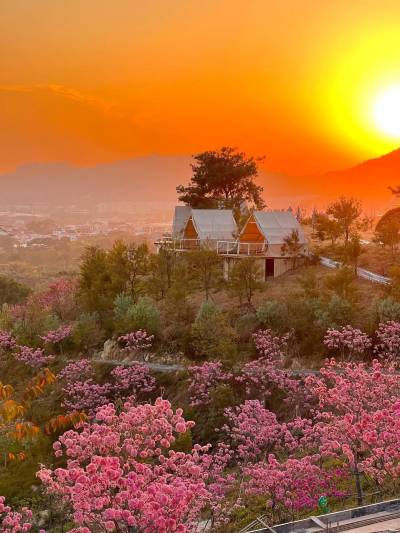
Qinling_National_Botanical_Garden_Scenic_Area.
Main Highlights: What You Absolutely Can’t Miss
Discover the Wonders of Qinling National Botanical Garden
Nestled at the northern foot of the majestic Qinling Mountains in Zhouzhi County, the Qinling National Botanical Garden is a treasure trove for nature lovers and culture enthusiasts alike. This expansive botanical garden is not only the largest of its kind in China but also a sanctuary for over 1,641 species of wild plants and 164 species of animals, making it a vital area for ecological conservation and education. Here are the standout attractions you absolutely cannot miss during your visit.
1. Diverse Flora and Fauna
The garden is home to an impressive variety of plant life, including the rare Davidia involucrata (commonly known as the dove tree) and the Taxus chinensis (Chinese yew). As you wander through the lush landscapes, keep your eyes peeled for unique wildlife such as golden monkeys, crested ibises, and the elusive giant panda. The garden’s rich biodiversity provides a perfect backdrop for understanding the importance of conservation.
2. Seasonal Splendor
Each season brings its own charm to the botanical garden. Spring bursts into bloom with vibrant flowers, while summer offers a cool retreat from the heat. Autumn transforms the landscape into a canvas of rich colors with golden ginkgo and fiery red maples, creating a picturesque setting perfect for photography. In winter, the snow-covered scenery adds a serene beauty that is enchanting in its own right.
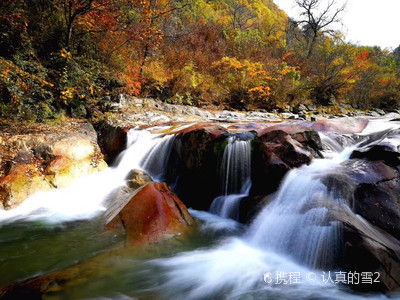
Qinling_National_Botanical_Garden_Scenic_Area.
3. Educational Opportunities
The garden is not just a visual feast; it also serves as an educational hub. Visit the Popular Science Museum and the Specimen Museum to learn about the structure and functions of various plants. Engage in hands-on activities that enhance your understanding of botany and ecology, making this a perfect outing for families and school groups.
4. Stunning Landscapes
Explore the garden’s stunning natural features, including grand canyons, waterfalls, and ancient plank roads. The diverse geomorphic units—from high mountains to low hills—offer breathtaking views and numerous trails for hiking. The well-maintained paths make for an enjoyable walking experience, whether you’re seeking a leisurely stroll or a more vigorous hike.

Qinling_National_Botanical_Garden_Scenic_Area.
5. Cultural Integration
The Qinling National Botanical Garden bridges the gap between nature and culture. After soaking in the natural beauty, take time to appreciate the cultural significance of the region. The garden often hosts exhibitions and events that highlight local history and traditions, enhancing your understanding of the rich cultural tapestry of Shaanxi Province.
6. Family-Friendly Activities
Pack a picnic and enjoy a day out with the family amidst nature. The garden features several spots perfect for relaxing and enjoying a meal. There are also opportunities for children to engage in educational workshops and practical courses that encourage a love for nature and an understanding of agricultural practices.
7. Mindful Conservation
As you explore, take a moment to reflect on the importance of preserving rare plant species and natural habitats. The garden emphasizes conservation efforts, with dedicated areas showcasing endangered flora. This aspect of the visit not only heightens your appreciation for nature but also encourages you to be an advocate for environmental protection.
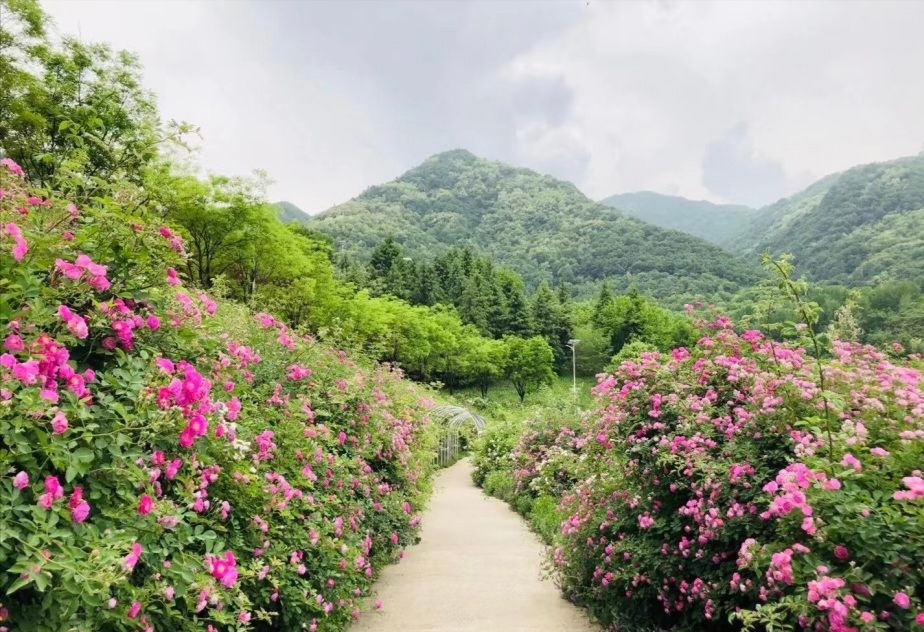
Qinling_National_Botanical_Garden_Scenic_Area.
Tips for Your Visit
- Opening Hours: The garden operates from 8:30 AM to 5:30 PM, with ticket sales ending at 4:30 PM. Plan your visit accordingly to make the most of your time.
- Duration: A full day is recommended to fully experience the various attractions and activities offered in the garden.
- Accessibility: The paths are stroller-friendly, making it an excellent option for families with young children.
- Reservations: If planning to dine at one of the onsite restaurants, consider making reservations to ensure a spot, especially during peak seasons.
The Qinling National Botanical Garden is not merely a destination; it is an experience that nurtures the soul and inspires a deeper connection with nature. Whether you are a history buff, a nature enthusiast, or a family looking for a memorable day out, this botanical paradise promises an unforgettable adventure.
Planning Your Visit: A Practical Guide
Your Comprehensive Guide to Visiting Qinling National Botanical Garden
Nestled in the lush embrace of the Qinling Mountains, the Qinling National Botanical Garden is a treasure trove of biodiversity and natural beauty. This guide will help ensure you make the most of your visit to this stunning botanical paradise.
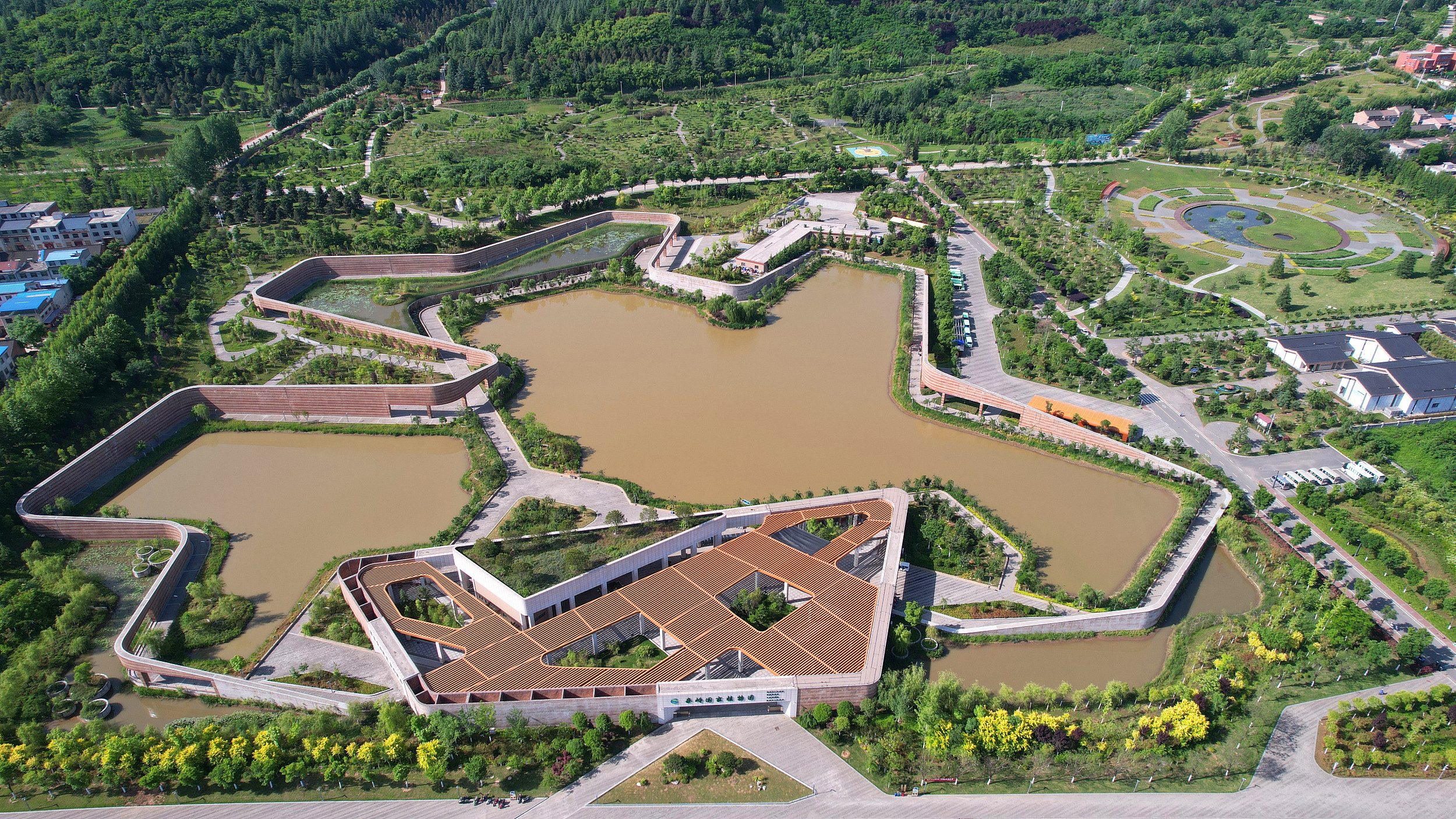
Qinling_National_Botanical_Garden_Scenic_Area.
Getting There
Location:
The garden is located in Zhouzhi County, approximately 70 kilometers from Xi’an, in Shaanxi Province. The address is:
Qinling National Botanical Garden
Zhouzhi, Xi’an, Shaanxi, China.
Transportation:
– By Car: The most convenient way to reach the garden is by car. Follow the signs from Xi’an towards Zhouzhi County.
– Public Transport: Buses frequently run between Xi’an and Zhouzhi. Check local schedules for the latest routes and times.
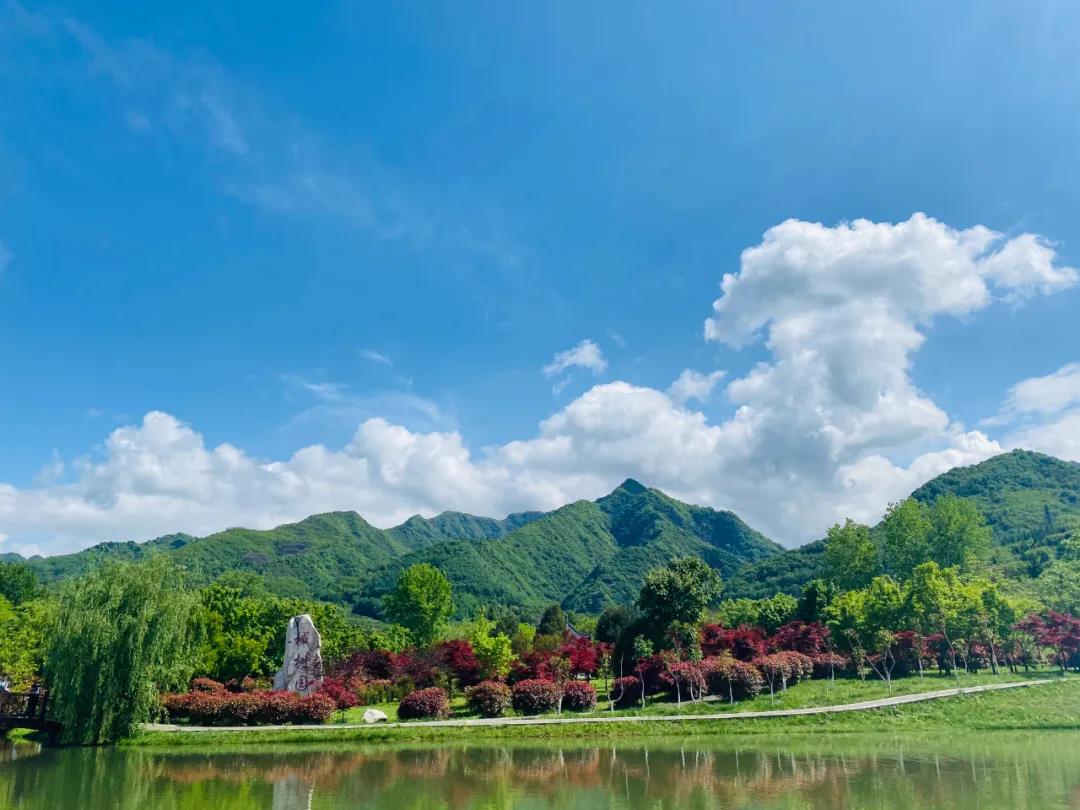
Qinling_National_Botanical_Garden_Scenic_Area.
Opening Hours
- Daily: 8:30 AM – 5:30 PM
Note: Tickets can be purchased until 4:30 PM, and admission ends at that time, so plan your visit accordingly.
Admission Fees
While specific ticket prices may vary, it’s advisable to check the official website or local listings for the most current rates. Discounts may be available for students, seniors, and children.

Qinling_National_Botanical_Garden_Scenic_Area.
What to Expect
Biodiversity:
The Qinling National Botanical Garden boasts an impressive collection of 1,641 species of wild plants and 164 species of animals, including pandas, golden monkeys, and crested ibises. With a forest coverage rate of 95%, the garden is a sanctuary for both flora and fauna.
Scenic Beauty:
Each season brings a unique charm to the garden:
– Spring: Lush greenery and vibrant blooms.
– Summer: A cool and comfortable retreat, perfect for leisurely strolls.
– Autumn: A riot of colors with the changing foliage, particularly stunning in the Garden Valley.
– Winter: A serene landscape blanketed in snow.
Highlights and Activities
- Nature Walks: With well-maintained paths, the garden is perfect for leisurely walks. Immerse yourself in the tranquil beauty of ancient cypresses and sharp-toothed oaks.
- Educational Experiences: Visit the popular science museum and specimen museum for interactive learning about the local ecosystem and conservation efforts.
- Succulent Exhibition: Explore over 300 pots of succulents during the autumn season, showcasing the beauty and diversity of these fascinating plants.
- Rare Plants: Don’t miss the chance to see rare species like Davidia involucrata and Taxus chinensis, highlighting the garden’s commitment to conservation.
Practical Tips
- Sightseeing Duration: Allocate at least one full day to explore the garden thoroughly.
- Family-Friendly: The garden is suitable for families; paths are stroller-friendly, and there are plenty of spots for children to enjoy nature.
- Dining Options: Local farmhouses within the garden offer meals, and reservations are recommended. Expect to pay around 60 RMB per person for a meal.
- Environmental Responsibility: Please respect the natural surroundings by taking your trash with you and adhering to local regulations.
Final Thoughts
A visit to the Qinling National Botanical Garden is not just a trip into nature; it’s an immersive experience that allows you to appreciate the delicate balance of ecosystems and the importance of conservation. Whether you are a nature enthusiast, a family looking for a day out, or a history buff intrigued by the cultural significance of the Qinling region, this botanical garden is a must-see destination in China. Enjoy your adventure!
Tickets: Prices, Booking, and Tips
When planning your visit to the stunning Qinling National Botanical Garden, understanding the ticketing process, prices, and a few handy tips will ensure a smooth and enjoyable experience. This expansive botanical paradise is not only a sanctuary for flora and fauna but also a perfect backdrop for immersing yourself in China’s rich natural heritage.
Ticket Prices
- General Admission:
- Adults: Approximately 60 RMB
- Children (under 1.2 meters): Free
-
Students & Seniors: Discounted tickets available with valid identification (around 30 RMB)
-
Additional Costs:
- Some specialized exhibitions or guided tours may incur extra fees, so it’s advisable to check in advance.
Booking Information
- Online Reservations:
-
Tickets can be conveniently booked through platforms like Trip.com or directly via the official website of the Qinling National Botanical Garden.
-
On-Site Purchase:
- Visitors can also buy tickets at the entrance, but it’s recommended to arrive early, especially during peak seasons, to avoid long queues.
Opening Hours
- The garden is open daily from 8:30 AM to 5:30 PM, with the last admission at 4:30 PM. To make the most of your visit, aim to arrive early in the day to explore the expansive grounds at a leisurely pace.
Recommended Visiting Time
- Duration: It is advisable to allocate a full day to enjoy the myriad attractions, ranging from lush gardens to educational exhibits. This time allows you to engage with the diverse plant species and possibly spot some of the rare animals that call this garden home, such as the giant panda and golden monkey.
Tips for Your Visit
-
Plan Ahead: Given the botanical garden’s vast area—639 square kilometers—consider downloading a map or plan your route in advance to ensure you don’t miss the highlights, including the impressive “Qinling Double Beauties” and the rare plant sections.
-
Dress Comfortably: Wear comfortable shoes suitable for walking, as you’ll want to explore various trails and scenic spots throughout the garden.
-
Stay Hydrated: Bring water and snacks, especially during the warmer months, as you’ll want to stay refreshed while wandering through the beautiful landscapes.
-
Respect Nature: As a visitor, it’s crucial to practice eco-friendly habits. Dispose of trash properly and avoid disturbing the wildlife.
-
Check the Weather: The climate can vary significantly due to the garden’s elevation. Be sure to check the forecast and dress accordingly, especially if you plan to hike or explore further into the surrounding natural areas.
Visiting the Qinling National Botanical Garden offers not just a glimpse into the diverse plant life of China but also an opportunity to reflect on the harmony between nature and humanity. Whether you are a history buff, a nature lover, or a curious traveler, this destination promises to enrich your understanding of China’s ecological treasures.
How to Get There: A Complete Transportation Guide
Visiting the Qinling National Botanical Garden Scenic Area offers an unforgettable opportunity to immerse yourself in the stunning natural beauty and biodiversity of China. Here’s your comprehensive guide on how to get there, ensuring a smooth journey to this enchanting destination.
Getting to Qinling National Botanical Garden
Location:
The Qinling National Botanical Garden is located in Zhouzhi County, approximately 70 kilometers southwest of Xi’an, in Shaanxi Province. The garden is nestled at the northern foot of the majestic Qinling Mountains, making it a picturesque spot for nature lovers.
By Air
- Nearest Airport: The closest major airport is Xi’an Xianyang International Airport (XIY), about 100 kilometers from the botanical garden.
- Getting to Zhouzhi: From the airport, you can take a taxi or use a ride-hailing service, which typically takes around 1.5 hours. Alternatively, you can catch a shuttle bus to Xi’an city center and then proceed to Zhouzhi.
By Train
- Departing from Xi’an: Xi’an Railway Station and Xi’an North Railway Station offer trains to Zhouzhi County.
- Travel Time: The train ride takes approximately 1-1.5 hours.
- From Zhouzhi Station: Upon arrival at Zhouzhi Station, you can take a local taxi or a bus to the botanical garden, which is around a 20-minute drive.
By Bus
- From Xi’an: Buses to Zhouzhi depart from several bus stations in Xi’an, including the Xi’an Chengxi Bus Station.
- Travel Time: The journey by bus takes about 1.5-2 hours, depending on traffic conditions.
- Tickets: You can purchase tickets at the bus station or via popular travel apps. Make sure to check the schedules as they may vary.
By Car
- Driving Directions: If you’re renting a car, take the G108 National Highway from Xi’an. The route is well-signposted, and the scenic drive through the Qinling Mountains offers breathtaking views.
- Parking: There is parking available at the botanical garden, making it convenient for visitors traveling by car.
Local Transportation Options
- Sightseeing Buses: Once you arrive in the scenic area, you can utilize the sightseeing bus service that operates within the botanical garden, providing easy access to various attractions.
- Walking Trails: The garden features well-maintained walking paths, allowing visitors to explore at their leisure.
Best Times to Visit
The botanical garden is open all year, but each season offers a unique experience:
– Spring: Lush greenery and blooming flowers create a vibrant atmosphere.
– Summer: The cool climate in the mountains is perfect for escaping the heat of the city.
– Autumn: The stunning array of colors in the foliage is a photographer’s dream.
– Winter: The snow-covered landscapes provide a serene and tranquil setting.
Useful Tips
- Plan Ahead: Ensure you allocate enough time to explore the garden fully. A recommended visit duration is at least one day.
- Check Opening Hours: The garden typically opens at 8:30 AM and closes at 5:30 PM, with last admissions at 4:30 PM.
- Prepare for Nature: Wear comfortable shoes and bring water, especially if you plan to hike along the trails.
With these transportation options and tips, your journey to the Qinling National Botanical Garden will be as enjoyable as the destination itself. Embrace the rich flora and fauna, and experience the harmonious blend of nature and culture that this remarkable site has to offer.
Local Cuisine and Accommodation Nearby
Discover Local Flavors and Comfortable Stays Near Qinling National Botanical Garden
When you visit the enchanting Qinling National Botanical Garden, you’ll want to make the most of your experience by indulging in local cuisine and enjoying comfortable accommodations. Nestled amidst the stunning natural beauty of the Qinling Mountains, the surrounding area offers a variety of dining and lodging options that cater to every taste and budget.
Local Cuisine
Exploring the flavors of Shaanxi Province is a delightful journey for your palate. Here are some must-try dishes and local dining spots near the botanical garden:
-
Biang Biang Noodles (油泼面): These wide, hand-pulled noodles are a signature dish of the region. Served with a spicy sauce made from chili oil, garlic, and vinegar, they are a must-try for noodle enthusiasts. Look for local eateries in Zhouzhi that specialize in this dish.
-
Shaanxi Dumplings (饺子): Known for their unique fillings, Shaanxi dumplings come in various styles. Enjoy them steamed, boiled, or pan-fried. Many restaurants offer dumpling banquets, where you can sample a variety of flavors.
-
Yang Rou Pao Mo (羊肉泡馍): This hearty lamb soup served with crumbled bread is perfect for a fulfilling meal after a day of exploring. It’s a traditional dish that embodies the rich culinary heritage of the region.
-
Local Farmhouse Restaurants: Many farmhouses around the botanical garden offer freshly prepared meals featuring local ingredients. Enjoy a rustic dining experience where you can savor fish caught from nearby streams and seasonal vegetables. Reservations are recommended, with prices typically around 60 RMB per person.
Accommodation Options
After a day spent wandering through the lush landscapes of the Qinling National Botanical Garden, finding a cozy place to unwind is essential. Here are some recommended accommodations nearby:
-
Taibai Mountain Phoenix Spr Hotel: This well-rated hotel combines comfort with stunning views of the surrounding mountains. It is an ideal base for exploring the botanical garden and offers modern amenities along with a touch of local charm.
-
Qinling Farmhouses: Experience rural hospitality by staying at one of the many farmhouses in the area. These accommodations often provide a unique opportunity to connect with nature, and many have on-site dining options that feature home-cooked meals.
-
Zhouzhi Hotels: The town of Zhouzhi has a range of hotels catering to various budgets. From luxury stays to budget-friendly options, you’ll find comfortable rooms equipped with essential amenities, ensuring a restful night’s sleep after your adventures.
When planning your visit to the Qinling National Botanical Garden, take the time to explore the local cuisine and accommodations. Not only will these experiences enhance your trip, but they will also allow you to connect more deeply with the rich culture and natural beauty of this remarkable region.
Frequently Asked Questions
Frequently Asked Questions about Qinling National Botanical Garden Scenic Area
1. What are the opening hours for the Qinling National Botanical Garden?
The garden is open daily from 8:30 AM to 5:30 PM. Last admission is at 4:30 PM, so make sure to arrive with enough time to explore the park.
2. How do I get to the Qinling National Botanical Garden from Xi’an?
The garden is located approximately 70 kilometers from Xi’an, and there are several transportation options available. You can take a taxi, hire a private car, or use local buses that connect to Zhouzhi County. If you prefer a guided experience, consider joining a tour that includes transportation.
3. What is the recommended duration for visiting the garden?
It is recommended to set aside a full day for your visit to fully enjoy the diverse flora and fauna, as well as the scenic landscapes. A leisurely stroll through the garden allows you to appreciate the beauty and tranquility it has to offer.
4. Are there any special attractions or features within the garden?
Yes! The Qinling National Botanical Garden is home to over 1,641 species of wild plants and 164 species of animals, including rare species like pandas and golden monkeys. The botanical garden also features various themed areas, such as the rare plant area and the popular science museum, making it a great spot for both nature lovers and families.
5. Is there an entrance fee to visit the garden?
Yes, there is an entrance fee, but prices may vary. It is advisable to check online or call ahead for the most current ticket prices. Discounts may be available for students or groups.
6. Can families with children enjoy the garden?
Absolutely! The garden offers a family-friendly environment with a variety of activities, including educational exhibits and interactive displays. There are also flat walking paths suitable for strollers, making it easy for families to explore together.
7. Are there dining options available within the garden?
Yes, there are dining facilities available, including restaurants and farmhouses that serve local cuisine. It’s a good idea to make reservations, especially during peak seasons, to ensure you have a place to eat.
8. What should I keep in mind when visiting the garden?
When visiting the Qinling National Botanical Garden, consider the following tips:
– Wear comfortable shoes for walking.
– Bring water and snacks, especially if you plan to spend the whole day.
– Respect the natural environment by not littering and staying on designated paths.
– If you are traveling with children, ensure they are supervised at all times, particularly near water features.
Final Thoughts on Your Trip
Embrace the Beauty of Qinling National Botanical Garden
As your journey through the Qinling National Botanical Garden comes to an end, take a moment to reflect on the rich tapestry of nature, history, and culture that this remarkable destination offers. Nestled at the foot of the majestic Qinling Mountains, this botanical paradise is not merely a feast for the eyes; it is a sanctuary for the spirit, where the harmony between humanity and nature unfolds in breathtaking beauty.
Highlights of Your Experience
-
Diverse Flora and Fauna: With over 1,641 species of wild plants and numerous rare animals, including the elusive panda and golden monkey, the garden provides a unique glimpse into the biodiversity of this ecological treasure.
-
Seasonal Splendor: No matter the time of year, the garden enchants visitors. Whether it’s the vibrant blossoms of spring, the cool shade of summer, the colorful foliage of autumn, or the peaceful snow of winter, each season paints a different picture, inviting you to return time and again.
-
Educational Insights: Your visit has likely deepened your appreciation for the delicate balance of ecosystems. Engaging with the popular science exhibits and learning about rare plant species enhances your understanding of environmental conservation—a critical theme in today’s world.
-
Cultural Resonance: The integration of culture and history within the garden enriches the experience, allowing you to connect with the land and its stories. Each pathway and plant holds a narrative, echoing the traditions and knowledge of those who came before.
Final Thoughts
As you leave the Qinling National Botanical Garden, carry with you not just memories of stunning landscapes and rare wildlife, but a renewed commitment to preserving our natural world. This garden stands as a testament to the beauty of biodiversity and the importance of conservation efforts in maintaining such treasures for future generations.
So, whether you’re continuing your travels through China or returning home, let your experience here inspire you to advocate for nature and celebrate the profound connections we share with our environment. Until we meet again on your next adventure, may your heart remain as open as the garden’s vast skies and your spirit as vibrant